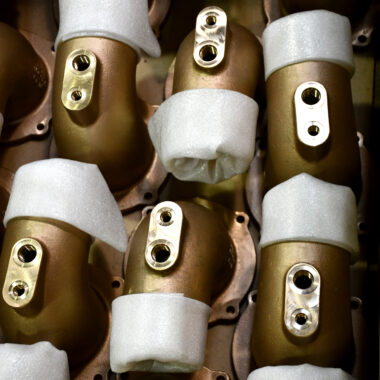Attaining Quality in Aluminum Casting: Expert Tips and Techniques
Attaining Quality in Aluminum Casting: Expert Tips and Techniques
Blog Article
Study the World of Light Weight Aluminum Casting: Understanding the Various Approaches
Light weight aluminum spreading is a fundamental procedure in the production industry, with different approaches employed to produce exact and detailed components. From the standard sand spreading method to the innovative die casting procedure, each approach offers special benefits depending on the demands of the job.
Sand Casting Approach
Sand casting, a widely-used method in aluminum spreading procedures, involves producing molds made of compacted sand for putting liquified steel. As soon as the mold and mildew is all set, it is safely put in a flask and molten aluminum is put right into the dental caries.
After the steel has actually cooled and solidified, the sand mold is escaped to disclose the aluminum casting. Sand spreading permits the production of intricate shapes and big parts that might be expensive or tough to create using various other techniques. It is additionally a lasting method as the sand can be reused and utilized multiple times, lowering waste in the casting procedure.
Long-term Mold And Mildew Method

One substantial benefit of the Permanent Mold Technique is the improved dimensional precision it supplies. The steel mold enables tighter resistances and better information in the final aluminum castings compared to sand casting approaches. This accuracy makes it a favored option for applications where limited dimensional control is essential, such as in the automobile and aerospace sectors.

Pass Away Casting Refine

Investment Casting Approach
Using a precision spreading technique, Investment Casting Strategy entails creating intricate light weight aluminum components by putting molten metal right into a ceramic mold. This process, likewise known as lost-wax spreading, starts with the production of a wax pattern of the preferred component (aluminum casting).
Investment casting is frequently made use of for manufacturing elements in sectors where limited tolerances and detailed layouts are required, such as aerospace, automobile, and medical devices. The versatility and accuracy of the Investment Casting Method make it a useful strategy in the globe of light weight aluminum casting.
Lost Foam Casting Technique
Having actually checked out the complex precision of Investment Casting Method, the emphasis currently shifts to the cutting-edge technique of Lost Foam Casting in aluminum part production. Lost Foam Casting, also recognized as evaporative pattern spreading, is a modern-day method where a foam pattern of the desired component is developed and then covered with a refractory product.
Furthermore, Lost Foam Spreading is an affordable procedure as it decreases the demand for cores and enables for the production of light-weight parts. In spite of its benefits, Lost Foam Casting needs mindful control of the casting procedure to avoid flaws and ensure top quality components.
Final Thought
To conclude, aluminum casting uses a range of approaches try this such as sand casting, long-term mold and mildew strategy, pass away casting, financial investment spreading, and lost foam casting. Each technique has its very own benefits and applications, making light weight aluminum casting a versatile and commonly made use of procedure in numerous industries. Comprehending the distinctions in between these approaches is essential in choosing the most suitable casting method for details manufacturing needs.
Sand spreading, a widely-used technique in aluminum casting processes, includes producing molds made of compacted sand for pouring molten metal. aluminum casting.The Permanent Mold Technique, like sand spreading, is another common technique utilized in aluminum casting processes, offering distinct benefits in terms of mold and mildew reusability and dimensional accuracy. The metal mold allows for tighter have a peek at these guys resistances and better information in the last light weight aluminum spreadings compared to sand casting methods. The 2 major kinds of die casting are cold chamber die spreading and warm chamber Check This Out die spreading, each appropriate for different types of light weight aluminum alloys.In verdict, light weight aluminum casting provides a range of techniques such as sand casting, irreversible mold and mildew method, die spreading, investment casting, and shed foam casting
Report this page